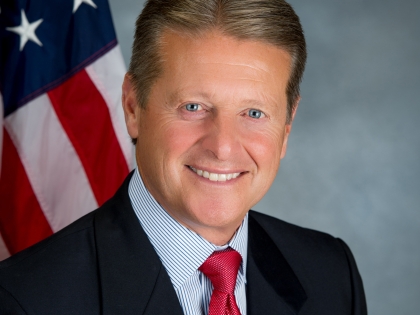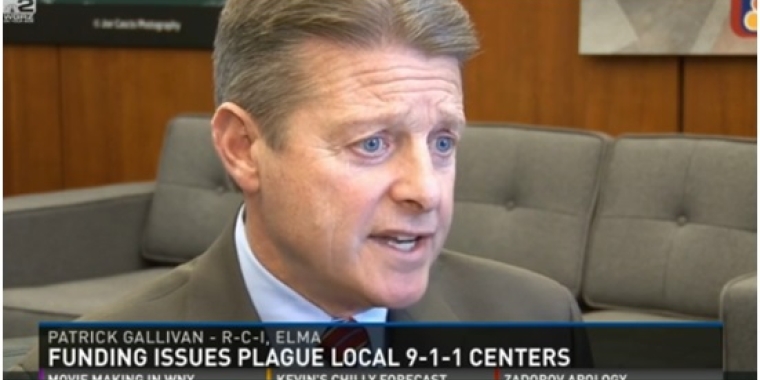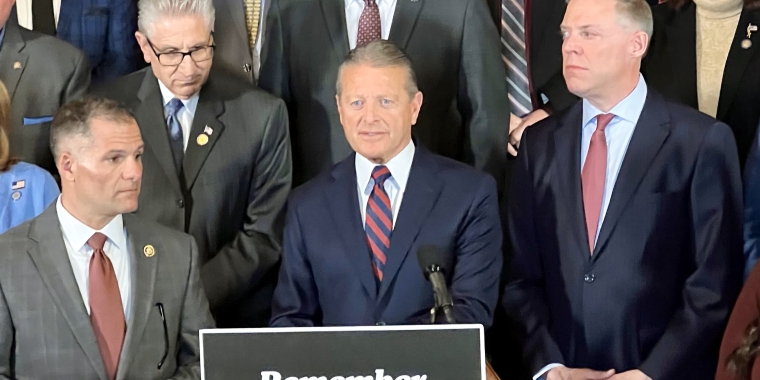
WGRZ: Lost on the Line: Emergency calls that can't be tracked

The woman who leads Erie County's 911 system says the FCC's plan to require cell providers to better locate callers is "inadequate" and could cost lives.
2 On Your Side joined Gannett journalists across the country to examine a potentially fatal flaw in the 911 system.
When you call 911 from a traditional landline phone, dispatchers almost always know your exact location. That has been in place for many years.
But fewer and fewer people use landline phones. Across all Erie County 911 answering points in 2014, almost 75 percent of the 660,975 emergency 911 calls were from cell phones.
Michelle Kerr, Deputy Director for Law Enforcement Communications at Erie County Central Police Services, said only about 60 percent of the emergency calls into her center come with accurate, timely location information.
That lack of key information is frustrating for Kerr.
"When we have somebody on the phone that we know needs help and for whatever reason they can't articulate and give us good location information," Kerr said.
Watch: What happens when you call 911 from your cell phone
At Kerr's suggestion, 2 On Your Side performed a test. We called 911 from inside the center. After a couple minutes and multiple re-bids – or re-requests to the cell carriers for better information – the computer only got within about 4 blocks of our actual location.
"That's not good," Kerr said. "We need that number to be higher."
The FCC earlier this year released new requirements for the four largest wireless providers, which will be forced to accurately and quickly locate 40 percent of all cell calls, but they have two years to meet that standard. The bar is raised each year, until by 2021, they must locate 80 percent of all cell calls.
"The push should be for a shorter time frame and obviously a much higher accuracy percentage," Kerr said.
In Niagara County, Captain Todd Ostrowski estimates more than half of the cell calls into 911 come with accurate location information. His office is in the midst of a multi-year, expensive mapping upgrade.
Watch: Money intended to help local dispatches has gone to other places
In 1991, New York implemented a monthly surcharge on subscribers' cell phone bills, intended to help fund local 911 operations. Under the "Public Safety Communications Surcharge," the state now requires subscribers to pay $1.20 each month to the state, in addition to any local fees (in Erie County, for example, subscribers pay an extra 30 cents).
Over time, though, the original intention of the surcharge has changed considerably. These days, the state splits the revenue among a variety of sources— and the counties do not receive much reimbursement. Erie County officials told 2 On Your Side they received about $220,000 from the state in 2013, even though subscribers in the county paid a combined $8.8 million in surcharge fees.
In fact, some of the revenue winds up in the state's general fund, where it serves no specific public safety purpose. According to the FCC, New York was one of six states in 2013 to divert funding from a 911 surcharge account for unrelated purposes. In total, the state collected $183.2 million dollars from subscribers' surcharge fees, but it diverted $20 million to the general fund. State budget records show the state diverted another $20 million in 2014, and the 2015 Enacted Budget Financial Plan reveals that the state plans to divert $50 million in 2015. In 2016, the plan projects another $50 million in diverted funds.
State Senator Patrick Gallivan (R, C, I- Elma) co-sponsors a bill in the Senate to curb the state's financial practices as it pertains to the surcharge fund. The bill, which is sponsored by a Republican in the Senate and a Democrat in the Assembly, would return 58 percent of the surcharge revenue to the counties. The rest of the money would continue to fund areas like the State Police, but under the legislation, the state could not divert money into the general fund.
"[The money] has never gone entirely to the counties. And the problem, of course, has been state government sweeping it -- sweeping a portion of it -- into the general fund, and using it for other purposes," Gallivan said. "I think it becomes even more of an acute problem now, because of the high cost of moving to the next generation."
It's important to note that millions of dollars in surcharge revenue funds grants for emergency response upgrades, which counties can compete for. The state's budget office told 2 On Your Side on Monday that $50 million of grants are available during fiscal year 2015 for counties through the Statewide Interoperable Communications Operations Grant Awards (SICG) program, in addition to the $10 million available to counties through separate emergency operations grants.
But the legislation aims to make even more money available for counties.
"I think it's an important public safety bill," State Senator Marc Panepinto (D-Buffalo) said. "I'm the ranking Democrat on the local government committee, and this is really a local government issue… It's another tax levy that the state puts on individuals that individuals don't get back in their own towns."



